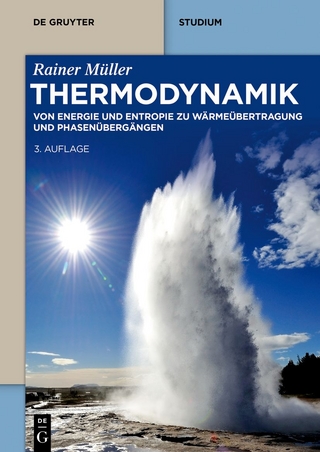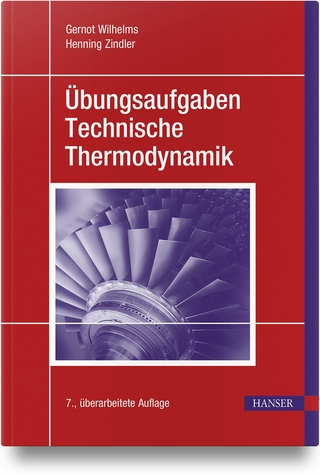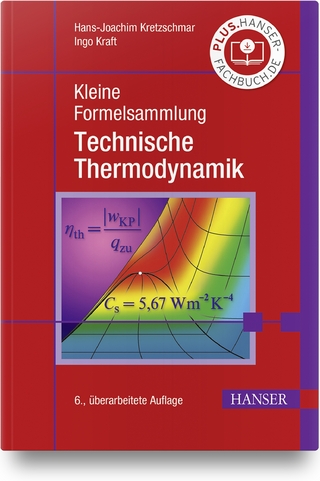
Complex Thermodynamic Systems
Kluwer Academic/Plenum Publishers (Verlag)
978-0-306-10886-0 (ISBN)
- Titel ist leider vergriffen;
keine Neuauflage - Artikel merken
Sychev v Preface At the present time, when a number of new areas of tech- nology are rapidly evolving, it is difficult to present a modern course in technical thermodynamics without developing such sub- jects as the thermodynamics of insulators, magnets, and super- conductors, or without treating the features of thermodynamic systems located in a gravitational field and in conditions of weight- lessness, etc. In fact the limited coverage of technical thermody- namics in the usual textbooks and school equipment as a rule prevents the authors from giving any detailed discussion of these important problems. I therefore resolved to treat these problems in a separate text. I discussed the concept of this book with my teachers V. A.
1 Introduction.- 1.1. The Equations of the First and Second Laws of Thermodynamics.- 1.2. Work.- 1.3. Heat Capacities.- 1.4. The Differential Equations of Thermodynamics.- 2 Equilibrium Thermodynamic Systems Which Undergo Other Forms of Work in Addition to Work of Expansion.- 2.1. Criteria for Equilibrium in Thermodynamic Systems.- 2.2. The Chemical Potential.- 2.3. Equilibrium Conditions in an Isolated Homogeneous System.- 2.4. The Conditions for Phase Equilibrium.- 2.5. The Maxwell Equations.- 3 Magnets.- 3.1. Introduction.- 3.2. Basic Thermodynamic Relations for Magnets.- 3.3. The Heat Capacities of a Magnet.- 3.4. Thermodynamic Processes in Magnets.- 3.5. The Magnetocaloric, Magnetostrictive, and Magnetoelastic Effects.- 3.6. Adiabatic Demagnetization.- 4 Insulators.- 4.1. Introduction.- 4.2. The Basic Thermodynamic Relations for Insulators.- 4.3. The Heat Capacities of an Insulator.- 4.4. Thermodynamic Processes in Insulators.- 4.5. The Piezoelectric, Electrostriction, Electrocaloric, and Pyroelectric Effects.- 5 Superconductivity.- 5.1. Introduction.- 5.2. Thermodynamics of the Transition from the Superconducting State to the Normal State.- 5.3. The Phase Diagram of a Superconductor.- 5.4. The Heat Capacity in the Superconducting and Normal Phases - Rutgers Formula.- 5.5. Magnetostriction of a Superconductor.- 6 Surface Phenomena.- 6.1. Some Basic Properties of Surfaces Separating Phases.- 6.2. Surface Tension.- 6.3. Basic Thermodynamic Relations for Surfaces.- 6.4. The Effect of Surface Phenomena on the Thermodynamic Properties of a System.- 6.5. Phase Equilibrium Conditions Taking Account of the Properties of the Phase Separation Surface.- 6.6. Capillarity.- 7 Gases and Liquids in a Gravitational Field.- 7.1. Basic Thermodynamic Relations for a System in a Gravitational Field.- 7.2. Distribution of Pressure and Other Quantities with Height of a Gas or Liquid Column.- 7.3. Entropy of a System in a Gravitational Field.- 7.4. Adiabatic Flow in a Gravitational Field.- 7.5. Thermodynamics of the Atmosphere.- 8 Liquids in the Weightless State.- 8.1. Features of the Behavior of Two-Phase Systems in the Weightless State.- 8.2. Possibility That One of the Phases May Lose Contact with the Walls of the Vessel.- 8.3. Stable Equilibrium States of a Two-Phase System.- 9 Radiation.- 9.1. Radiation in a Cavity as a Thermodynamic System.- 9.2. The Equations of State for a Photon Gas.- 9.3. Entropy and Chemical Potential of the Photon Gas.- 9.4. Thermodynamic Processes in a Photon Gas Heat Capacity.- 10 Elasticity of Solids.- 10.1. Basic Thermodynamic Relations for Solids.- 10.2. The Equation of State for an Elastically Deformed Rod.- 10.3. The Caloric Properties of an Elastically Deformed Rod.- 10.4. Adiabatic and Isothermal Deformation of a Rod.- Supplementary Readings.
| Reihe/Serie | Studies in Soviet Science |
|---|---|
| Zusatzinfo | biography |
| Sprache | englisch |
| Maße | 150 x 230 mm |
| Themenwelt | Naturwissenschaften ► Physik / Astronomie ► Thermodynamik |
| ISBN-10 | 0-306-10886-0 / 0306108860 |
| ISBN-13 | 978-0-306-10886-0 / 9780306108860 |
| Zustand | Neuware |
| Haben Sie eine Frage zum Produkt? |
aus dem Bereich


